
Understand Commercial
Foundation Damage!
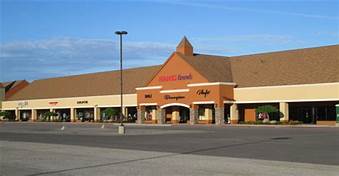
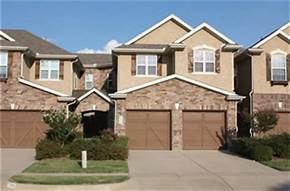
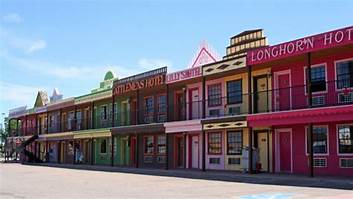
Understand commercial foundation damage and repair means understanding building practices and local soils.
Unneeded piering of apartments and other commercial buildings is big business. The nature of small commercial buildings are such that many of their foundations are destined to fail The fail because they are often constructed on land that has been deemed unsuitable for single family dwellings.
Another problem is the design of many of these buildings, the foot print. Land is by nature not level, much land has to be cut and filled to prepare a flat pad on which to build. The more soil that must be moved and levelled the more likelihood that areas of the building rest on a continuously non-supportive base. Usually this is not enough to require piers to readjust the slab, but is enough to cause plumbing problems, which is most commonly sewer line connections.

![cut-and-fill[1]](https://repairfoundations.com/wp-content/uploads/2021/03/cut-and-fill1.jpg)
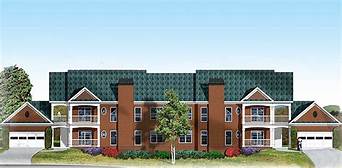
Undisturbed soils
Cut and fill
Structure on level expansive soils
With modern construction buildings seldom if ever move on their own. Building practices and modern materials are such that if a structure is build on a rock, and the rock does not move, the building does not move. In other words if the soil upon which the structure sits does not move, it is highly unlikely that the building will experience foundation movement or damage.
This leads us to the conclusion that the soil is the problem and must be stable to avoid foundation movement or damage.
.
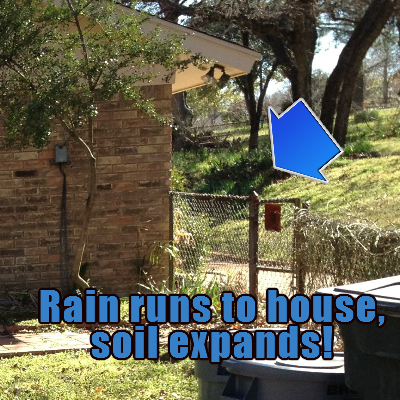
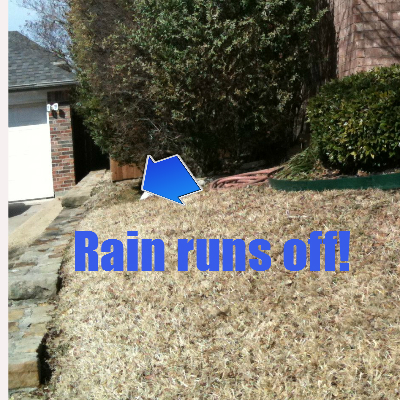
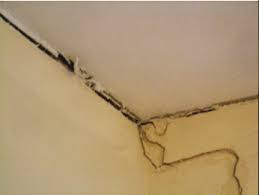
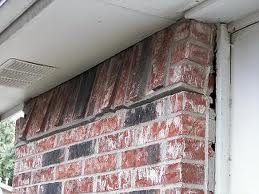
Moisture goes down hill to building and ponds next to house. Soil pulls moisture under building causing soil to expand and lift sections of building.
On other side of structure moisture runs away from building. Moisture is not wicked under home and soil does expand. This section of structure is not lifted.
Areas of structure are twisted causing damage both inside and outside of structure, usually cosmetic.
With modern construction buildings seldom if ever move on their own. Building practices and modern materials are such that if a structure is build on a rock, and the rock does not move, the building does not move. In other words if the soil upon which the structure sits does not move, it is highly unlikely that the building will experience foundation movement or damage.
This leads us to the conclusion that the soil is the problem and must be stable to avoid foundation movement or damage.
When expansive clay soils get hot they get dry, when they get dry they shrink. Now let's say the foundations of an apartment community are poured during a drought. Maybe on an area of land that contains cut and fill to level some of the pads. The building are completed and the rains come. The hill is still there and the buildings are on a level pad. The building are usually either rectangular or L shaped.

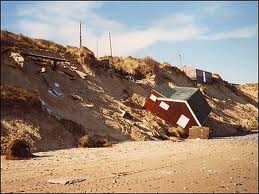
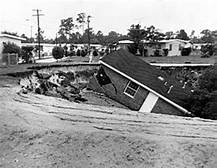
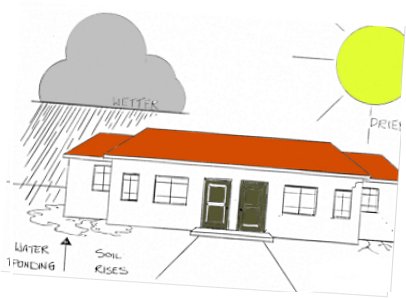
Earthquake Erosion Sinkhole Heave and Settlement
So the next step is to determine why soils move and there are several reasons. Earthquakes move soil, sinkholes move (or remove), soils, erosion moves soils, subsidence moves soils, transpiration can move soils. The most widespread cause of soil movement expansive soils. Where expansive soils exist added moisture can expand soils, removal of moisture can contract soils. When you add rolling hills and extreme seasonal moister changes the volume of foundation movement increases dramatically.
Earthquakes, sinkholes and massive erosion or earth shaking explosions are pretty self evident and usual need extensive remedial repairs often including the use of piers and often rebuilding.. At the other end of the spectrum you have the expansive soils. Expansive soils include soils contracting and allowing areas of the structure to settle or drop in elevations by very small degrees but enough to show at least cosmetic damage. More often soils expand under a building foundation and portions of the building is lifted also causing, usually cosmetic damage. On rare occasions structural damage may be caused by either contracting soils or then again much more often by expanding soils.
A classic example of this is quite prevalent in North Texas. As a rule, concrete foundations are not poured in wet soil. That would mean that the majority of foundations are poured during dry periods with a certain number of foundations poured during long hot summers including during droughts.
When the rain falls the water comes down the hill and sits or ponds next to the building, the capillary action pulls the moisture into the soil, expanding said soil and lifting that area of the building. The rain runs down the hill in other areas of the structure without ponding or causing the soil to swell. As one end or the structure swells and the rest of the building does not a twisting takes place and cracks often appear. Not only may cracks appear but plumbing may pull loose causing a leak under the slab. In most cases when this happens it is with the sanitary sewer system. As the sewer lines leak the soil trapped under the slab begins to swell and the center of the slab will begin to move up. At this point the slab will start sloping, cracks are appearing, doors are sticking or swinging open and a foundation repair company is called. The commissioned salesperson arrives with his or her computerized level and pick an arbitrary point to call zero. Usually it is near the center of the highest area which will show the outer edges to be down when in reality the center is up and the edges are at or near as built.
Now a commissioned salesperson who wants to sell piers will declare the edges down and prescribe piers to lift the edges up to the point of the heave. This can usually be achieved and the job looks good...for a while.
The contractor has told you that they may cause a leak while lifting so a plumber should be contacted AFTER the lift to check for leaks. In these cases leaks are found the building owner pays to get the leaks fixed after paying for the piers. Now what happens is the leaks are fixed and the soil dries out under the slab and the center of the slab falls back to as build while the piers exterior stay up on the piers. Not the center needs to be lifted because the center is not under warranty. only the piers which have not failed are under warranty.
Or if you had me out I would have told you to get the plumbing checked and when the leak is found to get it fixed and let the soil settle back to near as build and avoid the piers all together.
These things happen everyday in areas of expansive soils. The nature of low-rise commercial building is that they usually have long rectangular, L shaped or U shaped footprints which tend to lead to twisting as soils move. The are also often constucted on soils not deemed good for single family construction.
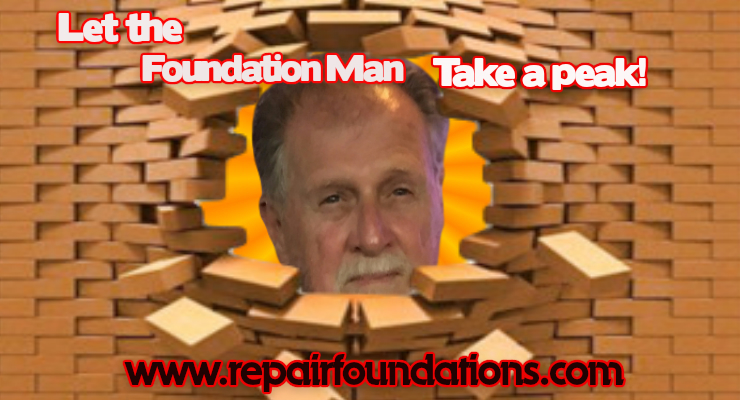
© Company Name. All rights Reserved I Disclaimer